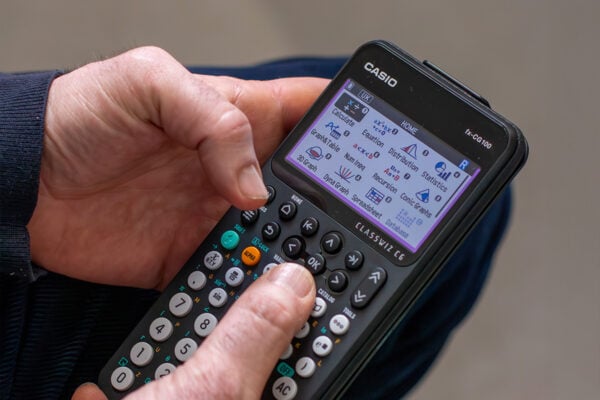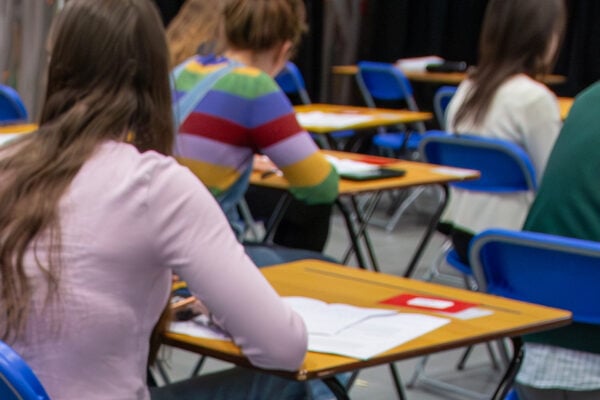Functions and graphs: A-level teacher shares what methods work for him

Functions and graphs is a subject that students can find intimidating and frequently struggle with, often because it seems complex and inaccessible at first glance.
However, as James Davis, Head of KS5 Further Mathematics at Newstead Wood School has found, effective teaching and tools can show that this is (relatively speaking) a fairly straightforward area of mathematics, which A-level and GCSE students don’t need to be afraid of.
James has over ten years’ teaching experience, four at his current school. He shared his thoughts on teaching functions and graphs, and what advice he would give to other teachers introducing this topic to their classes.
Simplifying the subject
When teaching this topic, James has found some of the terminology and notation used in relation to functions and graphs can make it seem unnecessarily complicated from the learner’s perspective. Students can be put off by terms such as ‘range’ and ‘domain’, for example, so simplifying what these mean in practice can make a big difference.
“Some students can struggle just with the notation of something that’s actually reasonably straightforward, once you get your head around it,” James said.
“I’ve overcome that by giving them simple definitions. Domain is x values, range is y values, and then if they’re asked to find a domain or the range, a sketch of the function is often very useful.”
Plotting and sketching graphs is a method that James has found particularly helpful for his students to explore functions in more depth and build on their knowledge. Inputting functions like y=2x+1 and y=x2 into a graphic calculator, for example, can give a visual illustration of the differences between quadratic and linear functions.
Using the fx-CG50 to explore functions and graphs
James has found the Casio fx-CG50 to be a particularly powerful tool to help his classes get to grips with functions and graphs.
When exploring topics such as function transformations, knowing how to use the calculator in graph mode means students can input the transformation to see resulting movements on the graph.
“Anything inside the brackets is a horizontal movement, opposite to what you would think, and anything outside the brackets is a vertical movement,” James said. “They can see that very quickly with the fx-CG50.
“I think It’s a really good tool for visualising function and graph transformations; it’s as powerful as any computer software that does this, but it has the advantage of being easily accessible in the classroom.”
The functionality available in graphic calculators means they can be useful for teachers introducing more advanced aspects of functions and graphs, such as composite functions and modulus graphs and equations.
As Rose Jewell, Area Coordinator for the Advanced Mathematics Support Programme, told us: “Graphic calculators open up so many options for your students.”
Students can also benefit from the ability to visualise concepts that they find difficult. When they encounter a challenging question, drawing a graph can open up new routes into it and help them find a solution by looking at the intersection and other visual aids.
Preparing for exams
When it comes to teaching functions and graphs in preparation for exams, James has seen the benefits of giving students as much time to get to grips with the topic as possible, particularly if they will be using graphic calculators to explore it.
“A long way out from the exam, we start teaching familiarity with the calculator and showing the powerful features of the calculator, so we’re getting students used to it,” he said.
Another method that James has found useful is having a graphic calculator emulator up on screen in the classroom. We have seen first-hand how James’ lessons benefit from the emulator, with notable improvements in student engagement and collaboration.
This allows students to practice with a tool that they’re then able to take into their exams, helping to ensure it will be as useful and productive as possible under timed conditions.
He noted that getting students ready to succeed in their exams is all about giving them lots of time to prepare, looking at exam questions in every lesson and getting them used to working as efficiently as possible in the time available.
Calculators can be a big help in this regard, particularly when it comes to building students’ confidence and giving them the reassurance of being able to check their answers in an exam scenario.
If you’re keen to improve your own understanding of functions and graphs on the fx-CG50 before introducing it to your students, sign up for a free Casio training session.



